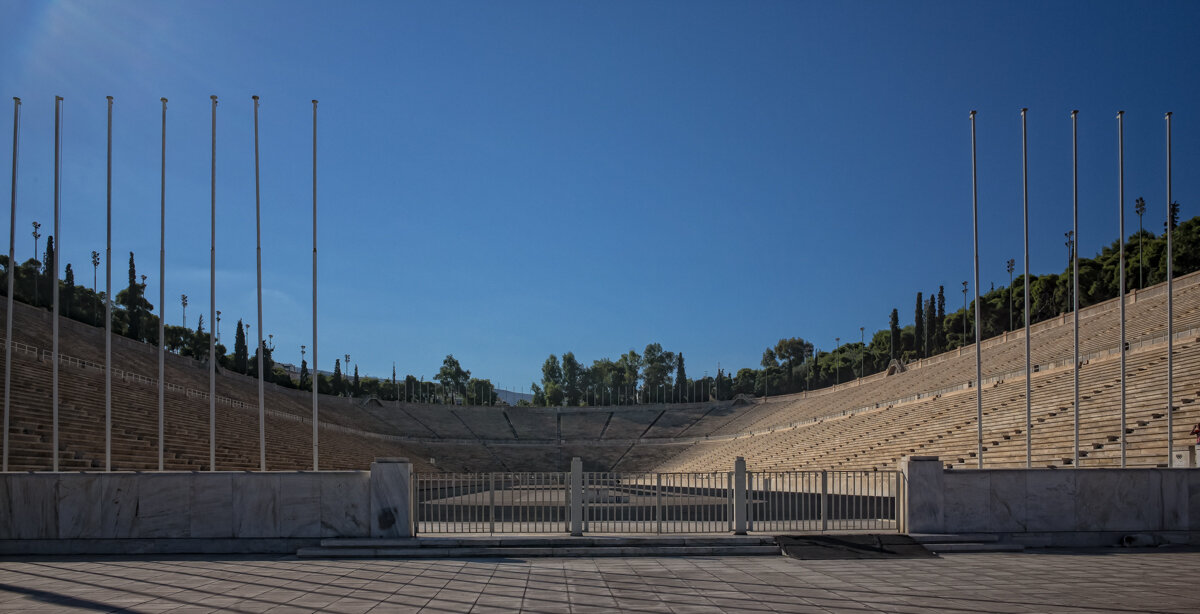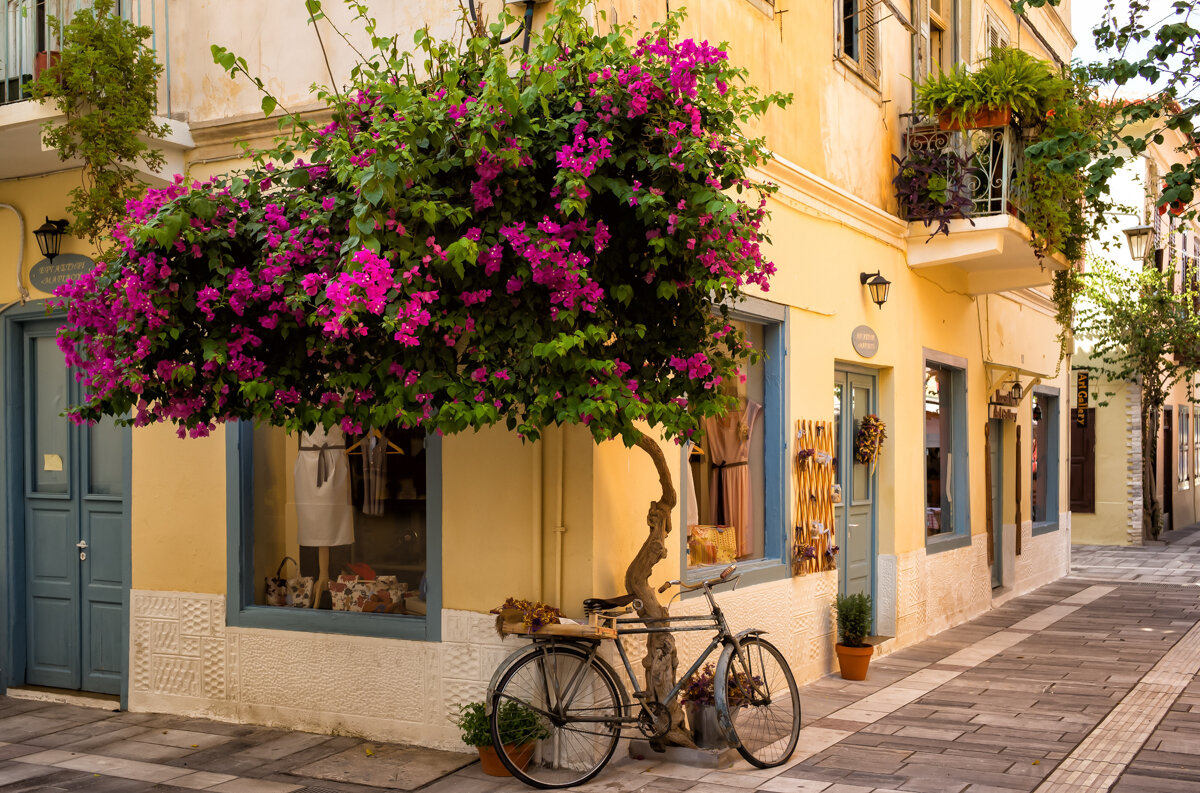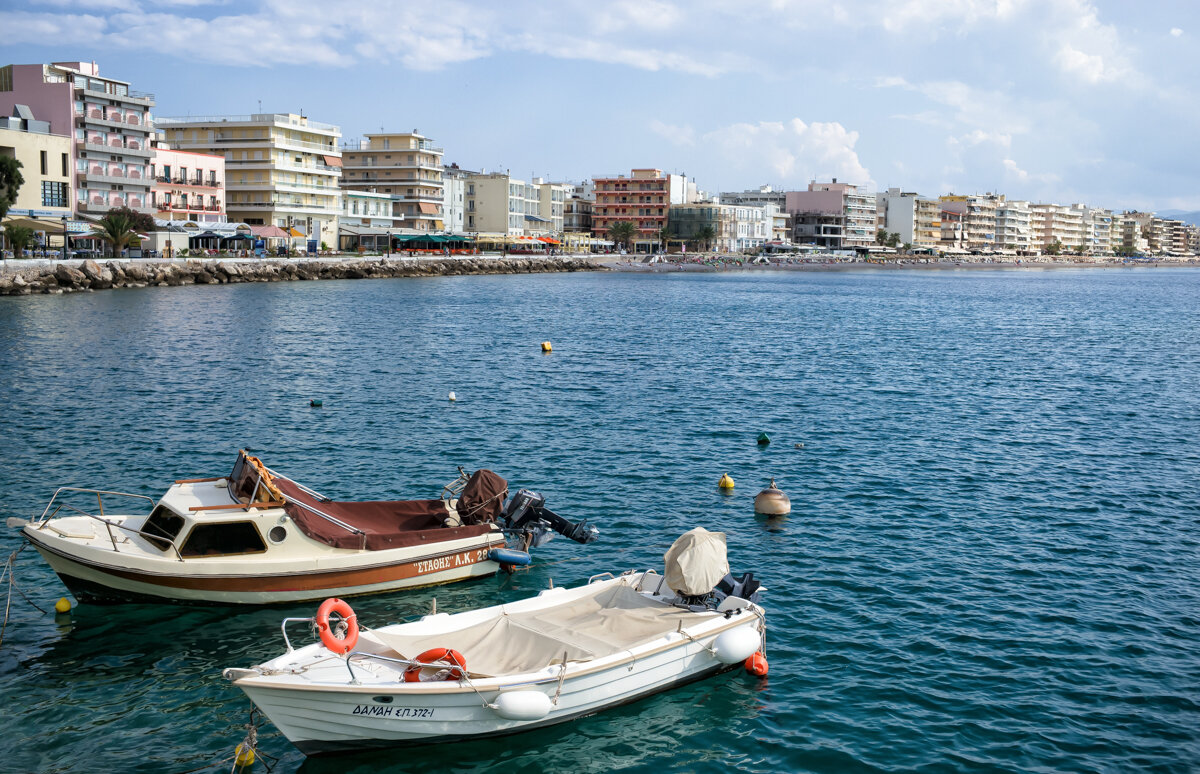Wonders of Ancient Greece
In 2014 my wife and I went on a tour of the Ancient Wonders of Greece along with a group of people from Ireland. In keeping with the classical theme, I brought along my latest Leica, an M240, together with some Leica classic lenses, 28mm and 35mm Summicrons and a 75mm Summarit for the occasional ‘long shots’.
The first stop was in Athens, the epicentre of the then recent Greek financial crisis. Dominating the city is the Arcropolis, which was undergoing substantial refurbishment at that time with cranes on the horizon. (image 2)
Image 2
Image 3
We visited an open area or ‘field’ beside the Acropolis called the Agora which contained many interesting buildings. One of the most attractive was the Stoa of Attalos which is, in fact, a reconstructed building from the 1950s based upon the original building from between 159 and 138 BC. I really like the way that the 28mm Summicron lens has handled the rows of columns in this. (image 3)
After the Agora and lunch, we visited the Acropolis Museum. One of the most impressive exhibits there was that of the Caryatids. These statues originally held up the porch of the building called the Erechtheion in the Acropolis. They were removed and replaced by replicas in the 1970s. These are the originals in the museum. (image 4)
The following day we started with a visit to the Panathenaic Stadium. This was the site of the ancient Greek games and, of course, it was the site of the first modern Olympics in 1896.
Image 4
Image 6
It was not possible for us to get access to the site and so I took the above shot with the gates and flag poles framing the stadium. (image 7)
We then moved on to visit the National Archaeological Museum where we saw some wonderful treasures including this sculpture of a boy and a horse. (image 6)
The following day we went on a trip around some islands starting from Piraeus Port near Athens. The first island which we visited was Poros. (images 8-9)
The next visit was to the beautiful island of Hydra where the Canadian poet and singer Leonard Cohen lived for some time. (image 10)
The photo on the bottom right shows the ‘island car park’. Cars are not allowed on the island and these little horses and mules must do the job instead. (image 11)
The final island we we visited was Aegina. Image 13 shows that both horses and cars get a look in on this island.
On our way back to Piraeus we were presented with a wonderful Aegean sunset. I really like the clouds in image 12. They are built up vertically in individual clumps in a manner that I saw more than once on our trip.
The day after our island trip we set off for Delphi in the mountains. On the way we stopped at the Monastery of Hosios Loukas. This is one of the most important monuments of Middle Byzantine Architecture and is a UNESCO World Heritage Site. The mosaics and frescoes in the church were stunning. (image 14-15)
Delphi is one of the best known and visited ancient sites in Greece. It is located in a beautiful mountain setting on the south western slopes of Mount Parnassus. The photo at the top of this article gives a good idea of the wonderful location. The first building which we visited at the site was the reconstructed Athenian Treasury. (image 16)
The next building we visited was the site of the Temple of Apollo. This was where the Oracle of the Pythia in the form of a priestess sat on a tripod (a three legged stool, no cameras in those days!) over a chasm from which fumes were emitted. This apparently put the Oracle into a trance and while she was in that trance Apollo spoke through her about various matters in words which were to guide his followers. (image 17)
The following day we headed towards the Peloponnese peninsula. For the previous two days I had been trying to get a picture of the top of Mount Parnassus. I did manage to get this one shot from the bus as we departed. Apollo and Dionysus and company must have been up to something up there, however, as there was still a small blanket of cloud covering the top summit. (image 18)
Image 18
We entered the Peloponnese by crossing over the Corinth Canal (image 19), This was a remarkable engineering achievement when it was completed in 1893. Much emphasis was made by our guide about how it improved the cost of trade in the region. It is, however, too narrow for modern ocean freighters and it can only be used as a one way system. It is mainly used today by tourist ships.
Image 19
Our next stop was at Mycenae where we visited the tomb of Clytemnestra the wife of Agamemnon and the citadel. (image 20)
After visiting Epidaurus we stayed for a few days ‘downtime’ at a seaside resort called Tolo. Beaches and swimming pools normally bore me to death. For the first day there I had a heavy cold but it was helped by a bottle of something, from the local pharmacy, that would probably require a doctor’s prescription in Ireland.
Image 20
In the afternoon of the first day we had a thunderstorm that relieved the heat and brought about a lovely rainbow; above right. (image 21)
Image 21
On our second day I had recovered enough to make the trip into the nearby town of Nafplio. There we visited the fortress of Palamidi and walked around some very nicely decorated streets. There are 999 steps up to the top of Palamidi but we managed to avoid 913 of them by taking a bus to the main gate, which was partially outside the town. (images 22-24)
On our way back to the airport we visited the main Corinth archeological site where there were ancient streetscapes. (image 25)
Image 22
Our final stop for a late lunch before going to the airport was the unprepossessing seaside resort of Loutraki. I would normally avoid such seaside places. There was a small late season crowd of tourists there who seemed to be enjoying themselves. (image 26)
In summary, therefore, here are some thoughts on Greece as we found it. At the time of our visit Greece was supposed to be in the throes in a massive economic collapse but there was not that much evidence of this other than the fact that a lot of the street lamps were not working the night that we came back from Piraeus port. The people we met in Greece were generally warm and most welcoming. Some aspects of Greek culture reminded me of the Middle East. I found it very much an East meets West place. While Greece has given us a lot of the things we value in Western European society such as democracy, philosophy and the arts, it remains today, in my eyes, as being just as close to the East as it is to the West. Hopefully, the relationships between Greece and Western Europe can remain and flourish. We owe a lot to Greece and its culture, which have shaped the world in which we now live.
















